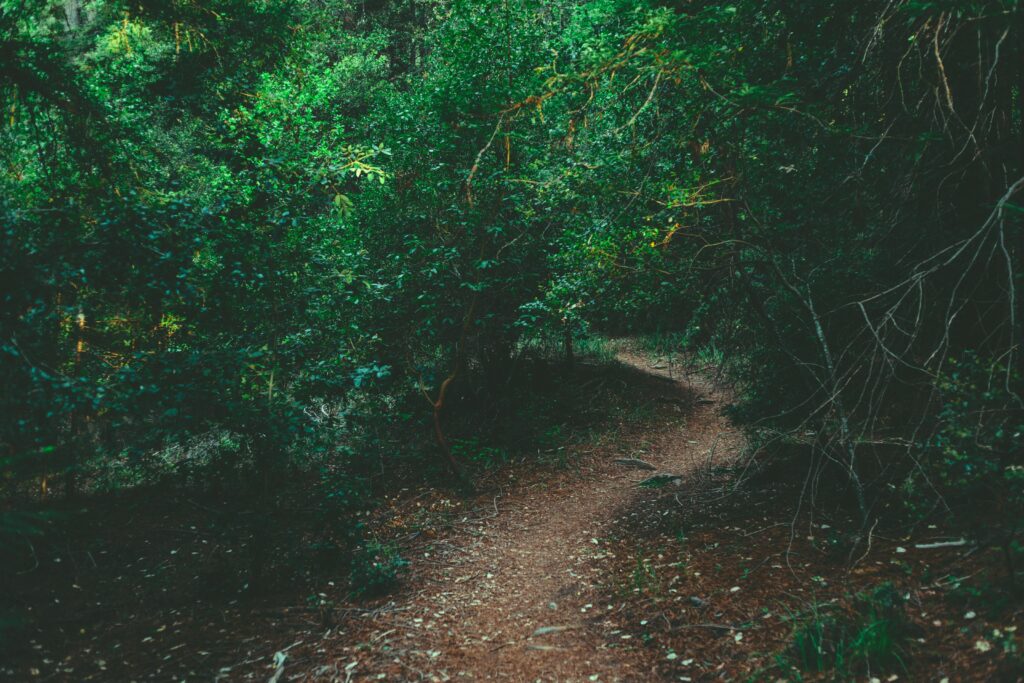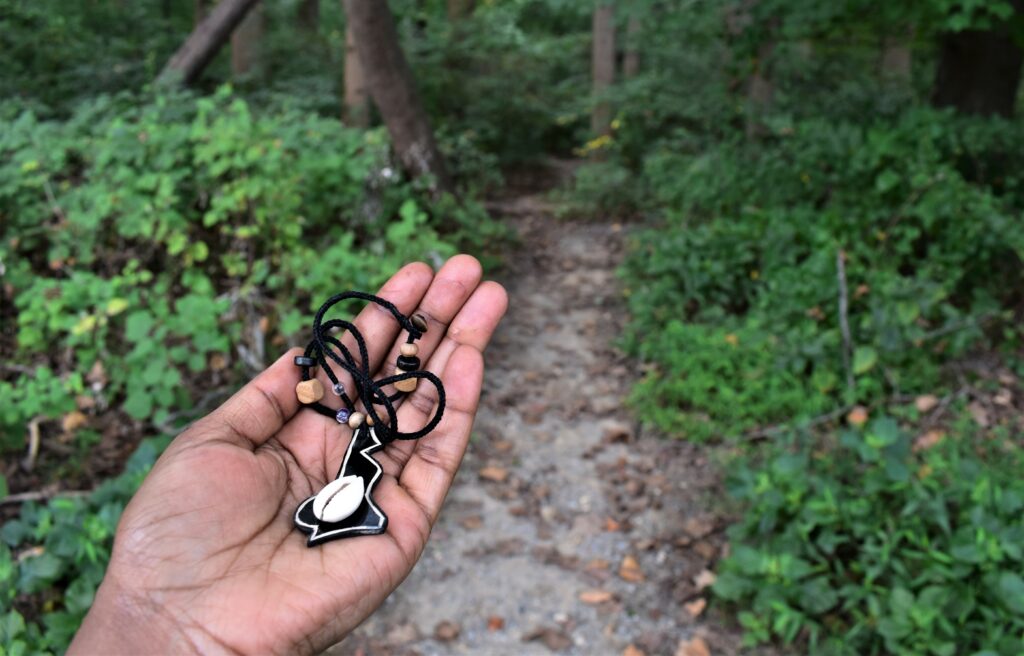The Path

“The Path” is part of the collection Indigenizing What It Means to Be Human. Read the introduction to the collection here.
You went farming in the Whiteman’s land
A sapling, a foal with wobbling feet
And now you return with the Whiteman’s tongue
A blossomed nkeng, a mare in her prime
[1]
[1]
Nkeng is a type of dracaena plant, usually called the “peace plant” in the northwestern grass fields of Cameroon.
And you ask their questions
Questions asked of my mother’s mothers
Questions that filled us with terror
Because the shadow of the master hovered over their shoulders
As they sought, and probed, and queried
And so, the secret of the owl sacredly hidden from daylight was divulged
But this knowledge became the yoke that bound us to misfortune
Our language, dress, customs they declared taboo
And now to see my very own, my seed, pursue this path!
I remember as a little girl, the White woman with the helmet
Who wore trousers and boots like the masters
And stared men straight in the eye
She said she sought to understand our ways
To know why when the Fon was lost
[2]
[2]
Fon refers to a traditional ruler believed not to die but to become “lost” through passage to the world of the ancestors.
Men would take off their caps, beat their chests, and sigh
While women tied their loincloths at the waist
Baring their proud breasts, ululating their grief
And so, our mothers and aunts and grandmas
Whispered words of tradition, entrusting our lifeline to her
But the essence of our people became the tool of their subjugation,
“Fons and chiefs!,” they cried, “Rule them through these men they so respect!”
Wulililililiy, abomination!
[3]
[3]
Wulililililiy is an exclamation of incredulity, anguish, and sometimes even wonder. It signals something out of the ordinary.
And now to think that my very own, my seed, pursues this path!
When I think of you, my child, my heart severs within my chest
Through no fault of yours you were born into these times
You could not run from the storm of this changing world
This limbo, where forgetting is as painful as remembering
And memory dances to the beat of the njang in our bone-weary bodies
[4]
[4]
Njang is a traditional dance common among some ethnic groups such as the Noni people in the northwestern grass fields of Cameroon.
But, my descendant, of all you could have studied, why this route?
Is this not searing betrayal, siding with that which oppressed your own
And from which our elders fought to break free with blood, and tears, and sweat?
Are you truly one of us, my offspring, or are you one of them?
Where do you belong? Who really are you?
Was there no way that my very own, my seed, could have escaped this path?
I hear you respond, “Bwan, I may speak the Whiteman’s tongue now
[5]
[5]
Bwan is the word for “mother” among the Noni people.
I may have acquired their ways and ask their questions
But I know where my umbilical cord is buried
Yet do not ask me who I am for I cannot say
The fabric of my life is woven with many colors
Its aesthetics cannot be reduced to a single version
And in this in-between where I negotiate my identity
And navigate the stormy seas of representation
Bearing the weight of my lineage upon my shoulders,
One thing remains certain: I am in a state of perpetual becoming
And within this space where past and present marry,
I emerge as a child of both and yet of neither, the proof of an uncharted future
But Bwan, isn’t it proper that the so-called Other document their own ways?
Isn’t it laudable that now the gazed at has become the gazer?
Isn’t it empowering that I can revisit and rewrite
Showing who we are, not who we ought to or were told to be?
And so, isn’t it fitting that your very own, your seed, should pursue this path?”
When you speak like that my child, I do not comprehend fully
But because your roots are sunken into our soil
Because our truth is buried deep in your bones
Because you, the little bird we sent forth, have grown potent wings
I welcome you back even as I wonder where “home” is for you
But I find consolation when you tell me,
“Bwan, I am an anthropologist
Yes, its sordid past as colonialism’s enabler remains
But I have safeguarded the fimbiw you passed down to me
[6]
[6]
Word for “kola nut” among the Noni people.
Entreating me to keep the cycle rolling
And now if I engage with my own through the eyes of my clan
Guided by the wisdom of my ancestors,
Then I can not only come home but take home with me—
History will not be told only from the victor’s viewpoint anymore
The lions have learned the hunter’s tongue
And will use it to sing their chorus
And so, Bwan, your very own, your seed, has indeed chosen to pursue this path!”
































